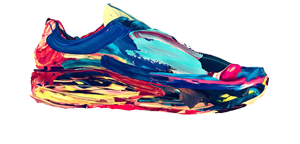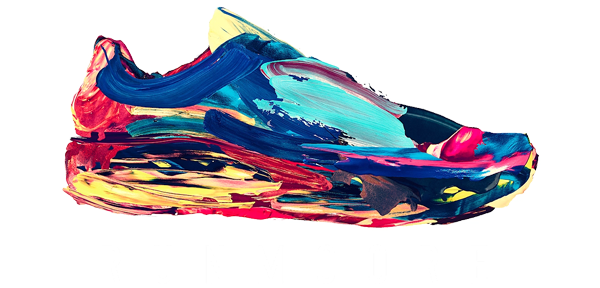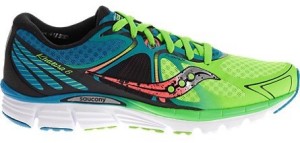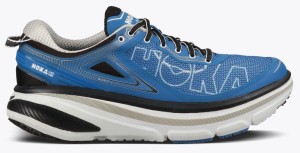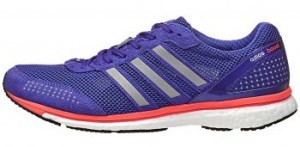I started getting serious about my running around two years ago. I guess I really do enjoy the actual running aspect of running, but if I’m being honest, one of the things I love most is the shoes. Pretty early on, I became obsessed with reading running shoe reviews and trying to find the perfect shoe for me.
As I was doing research, I started reading more and more about “the drop” or “offset” of shoes. 12mm, 8mm, 4mm, Zero Drop. What did these numbers mean and why did I find myself scoffing at the larger ones?
What is Running Shoe Drop?
Think about a man’s dress shoe. There generally is a small heel that keeps the back higher than the front. If you rest your foot flat on the ground in a man’s dress shoe, your actual foot heel will be a tiny bit further off the ground than the ball of your feet. The difference between that distance (heel height minus forefoot height) is the shoes “drop” or “offset.”
Even though running shoes don’t have a heel as prominent as a dress shoe — I mean, they generally look flat — it’s still there. How much heel there is (called the “heel stack height”) tends to be a signifier of how much cushion a shoe has. The more height, the more cushion.
In most running shoes, that heel stack height tends to be higher than the forefoot height, and again, we have a “drop.” The measurement of that difference is so small that it’s done in millimetres (usually ranging from 0 to 16mm, often somewhere in between).
Born to Run Changes Things
All of this “drop” and “stack height” existed before 2009, but most people didn’t care all that much. Then the book Born to Run by Christopher McDougall came out. In the book, McGougall writes about a lot of things: Our natural running gait, a native Mexican tribe that runs hundreds of miles in sandals, Caballo Blanco, Vibram 5-finger shoes, Nike, shoeless running, ultramarathons, Scott Jurek, oh and running shoe drop.
The running shoe minimalist craze was born from there. People started being OK looking ridiculous in their Vibram 5-finger shoes, and those that weren’t instead looked for shoes with as little cushioning as possible. These shoes with minimal cushioning tend to have a very low drop (4mm or less) and, somehow, the drop became a signifier for minimalist shoes.
You’re Wrong About the Drop
But here’s the thing: minimalist shoes are low to the ground. The running shoe drop tells you nothing about that. In fact, running shoes have changed A LOT since 2009. And from the minimalist craze has sprung a maximalist rebellion. I mean, have you seen HOKAs?
Here’s what we can do. Let’s look at two shoes on opposite ends of the spectrum, both with 4mm drop.
Saucony Kinvaras
These are super popular among road runners who want just a little cushioning during training runs. The bottom of these things are almost all foam with just a little strategically-placed rubber. The Stats Heel Stack Height: 22mm Forefoot Stack Height: 18mm Offset: 4mm
VS.
HOKA ONE ONE Bondi
My goodness that is a tall shoe, and I don’t think pictures do it justice. If Kinvaras are verging on minimalist, HOKAs are the definition of maximalist. And yet… The Stats Heel Stack Height: 33mm Forefoot Stack Height: 29mm Offset: 4mm
And we can go even lower! Altra (my shoe brand of choice) only makes shoes with a zero drop. Sure, they have a minimalist shoe like the One 2.5 that has a 23mm stack height and nothing but soft foam on the bottom. But they also have the Paradigm 1.5, which has a height of 34mm (similar to HOKAs) and is still completely flat across the bottom.
Fine, But I Have a Question
“OK, OK, I get it, Adam. Low drop doesn’t mean a minimalist shoe. But a minimalist shoe is always going to have a low drop, right?” Well…Let’s look at one more shoe.
adidas adizero adios Boost 2
That name is “adiotic.” Still, it is the shoe worn during the fastest marathons ever run, including Dennis Kimetto’s world record marathon at Berlin 2014. The shoe is kind of a soft racing flat. Is it minimalist? Kinda. Is it low drop? No. The Stats Heel Stack Height: 23mm Forefoot Stack Height: 13mm Offset:10mm
Compared to the numbers we were looking at above, that drop is huge! Yet this shoe is still pretty low to the ground. Maybe not “minimalist,” but certainly in the same neighborhood as the Kinvara.
So what does all this mean?
It’s Just a Number
At the start of the minimalist shoe trend, running shoe drop was probably a significant number that told you a lot about the shoe. Now it’s just one of many numbers to keep in mind when selecting a shoe, and on its own doesn’t really tell you much at all.
